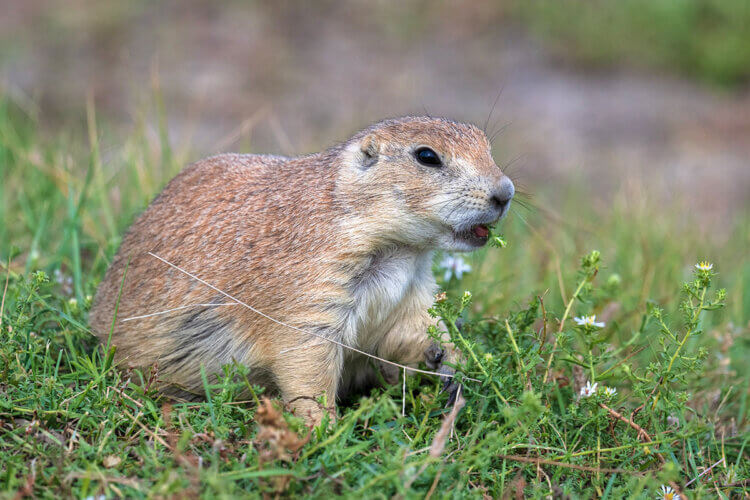
All photos © Robin and Arlene Karpan
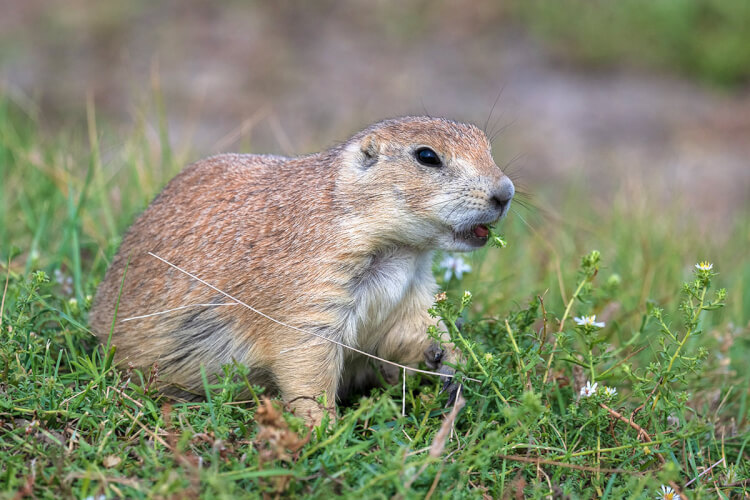
For a sure bet at wildlife viewing and photography, black-tailed prairie dogs in the West Block of Grasslands National Park in southern Saskatchewan can provide hours of entertainment. What’s more, this is the only place in Canada to find them in their natural habitat.
The park’s main Ecotour Scenic Drive that runs through the Frenchman River Valley cuts right through some of the colonies, making it easy to enjoy their antics and behaviour. There are two stops along the Ecotour Drive dealing with black-tailed prairie dogs. The first tells you about their colonies and common behaviors, while the second stop discusses their importance to the grassland ecosystem. As you venture farther afield into the West Block, you will come across more prairie dog colonies along the Back Country Loop road.
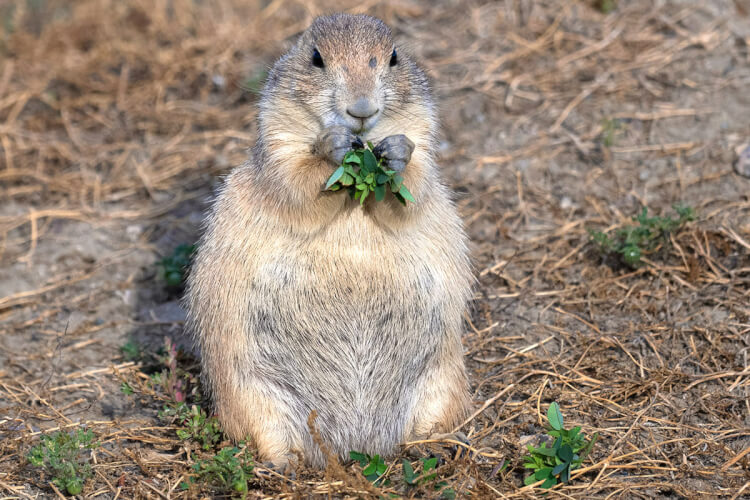
The park and surrounding area is the northern tip of their range that stretches all the way to Mexico. The mixed grass prairie is particularly suitable for them to burrow deep into the soil to make their homes and dens.
Black-tailed prairie dogs look somewhat similar to the ubiquitous Richardson’s ground squirrels (more commonly referred to as gophers) that we find throughout the Canadian prairies. But these rodents are a lot bigger (up to 16 inches long) and can weigh between one and three pounds. They have that distinctive black tip on the ends of their tails and a light-colored chest. Because of their wide range of vision, they are always on the lookout for danger from predators.
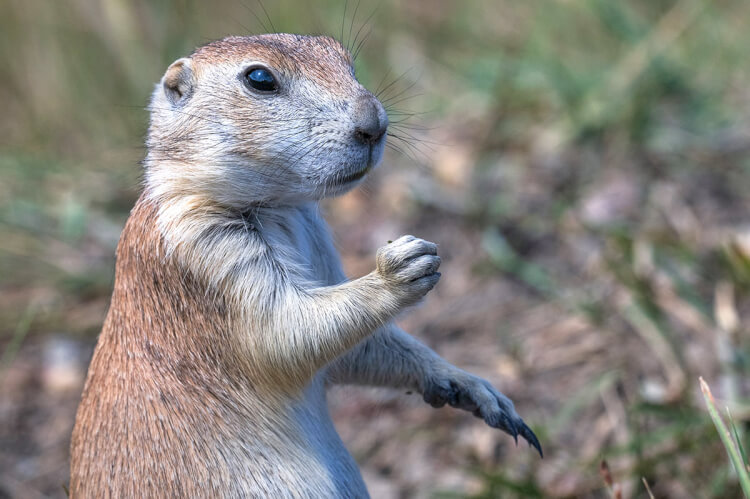
These playful and highly social animals live in huge colonies that can stretch for a kilometre or more and be home to thousands of individuals. Parks Canada estimates that there are 25 colonies within the park and neighbouring areas, and the total population could be as high as 23,000.
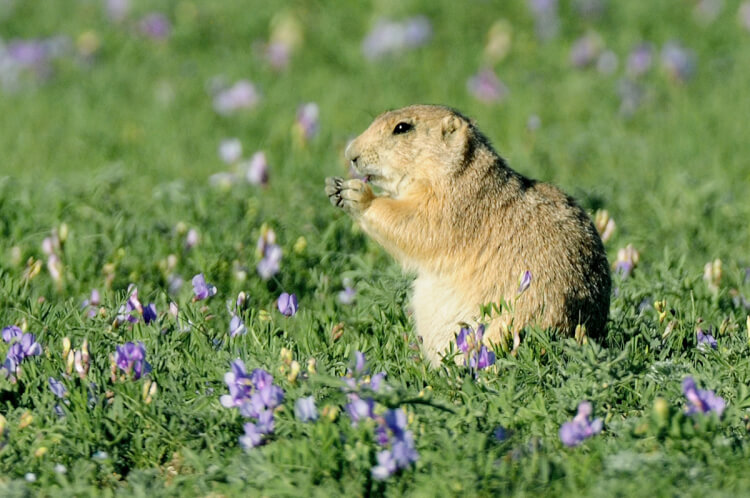
A Keystone Species
The prairie dogs are a keystone species, meaning that they provide both food and habitat for other species. Abandoned burrows can serve as a nesting spot for burrowing owls or a home for a prairie rattlesnake or a short-horned lizard. They are also a critical food source for many predators. Rattlesnakes can enter a burrow and eat the young. Badgers, coyotes, hawks, eagles, and swift-foxes prey upon them as well.
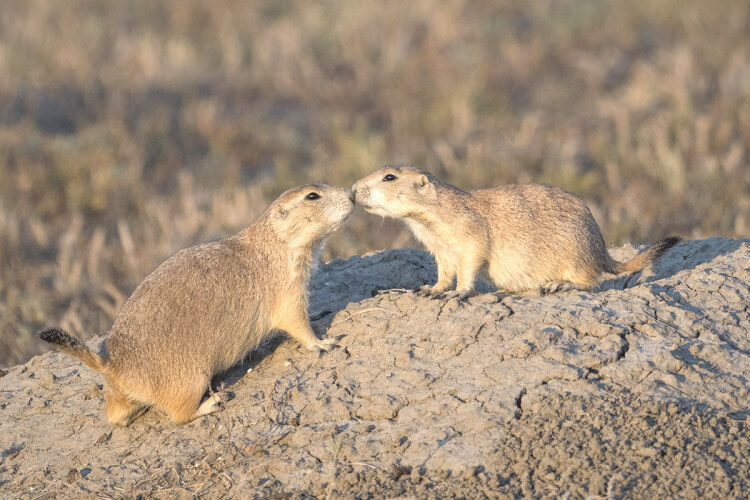
Troubled Times
It hasn’t always been a rosy picture for the black-tailed prairie dogs. Scorned by ranchers because their open burrows can be dangerous for livestock, they were poisoned and trapped to control their numbers. But such practices also affected species that depend on them for food and shelter.
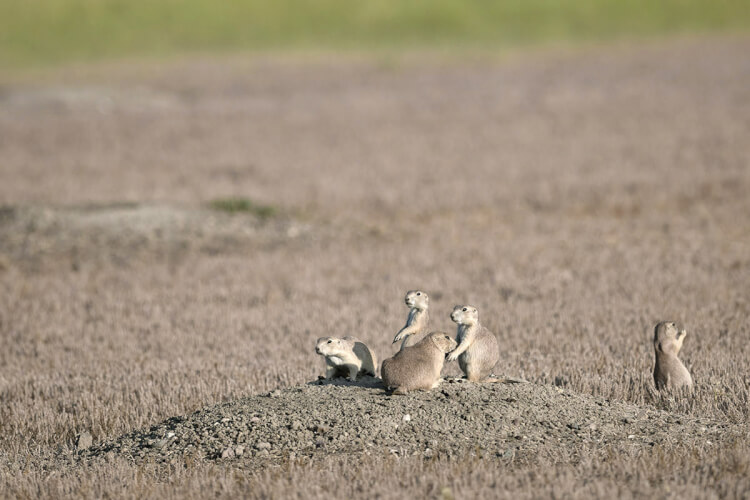
Disease, drought, and other factors have also taken a toll. In 2010, sylvatic plague was identified, but thankfully measures were taken to control the spread of the plague and prairie dog numbers have been increasing.
Photographing Black-tailed Prairie Dogs
Because they are so close to the road, the easiest way to photograph them is to stay in your vehicle. Some may disappear down their burrows when you stop, but after a few minutes they often continue going about their business.
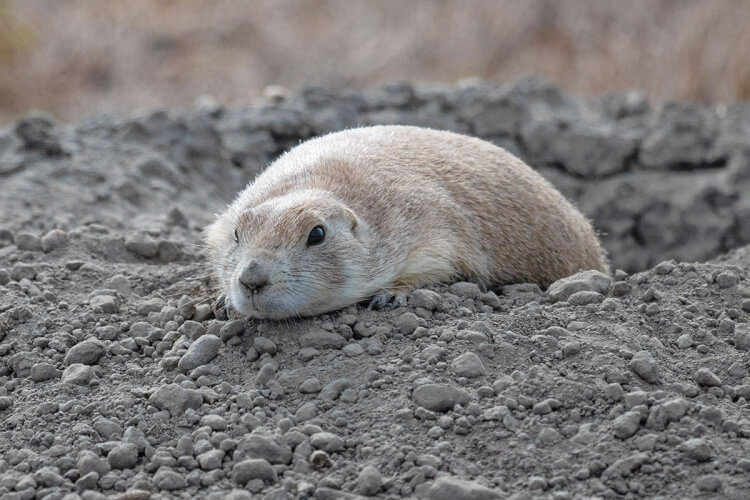
Prairie dogs are only active in the daytime, and especially in the cooler times of the day in early morning and later evening. They spend much of the day feeding on grasses and roots and can come close to the road where longer green grass often grows. During the heat of the day they could be having a dust bath, visiting with others, lounging at the entrance to their burrows, or watching for predators. They communicate using a variety of calls, yips and barks.
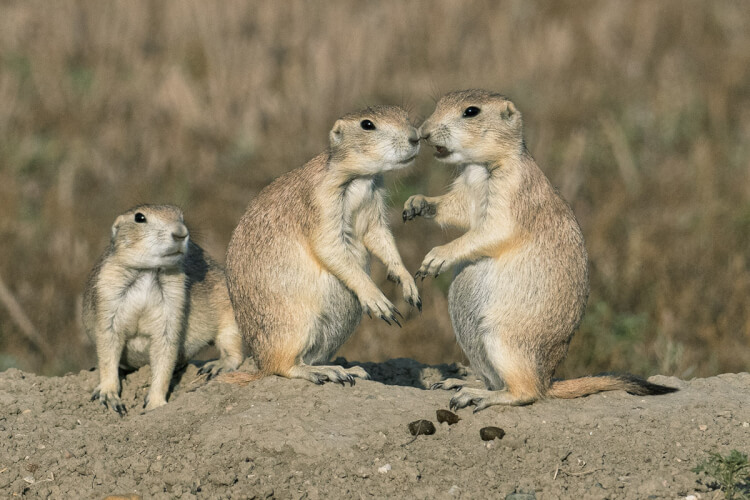

It’s fairly easy to get portrait shots of them sitting on their burrows, but it’s more fun to try to capture some behaviour such as feeding, or family members nuzzling each other as a greeting. It is thought that “kissing” and touching noses might also strengthen bonds between individuals.
More difficult to photograph is the “jump-yip” behaviour which happens extremely quickly. Here the dog jumps straight into the air while making a dog-like yipping sound, thought to be an all-clear signal to the colony. It could also be to mark a prairie dog’s territory, or perhaps a way to promote bonding.
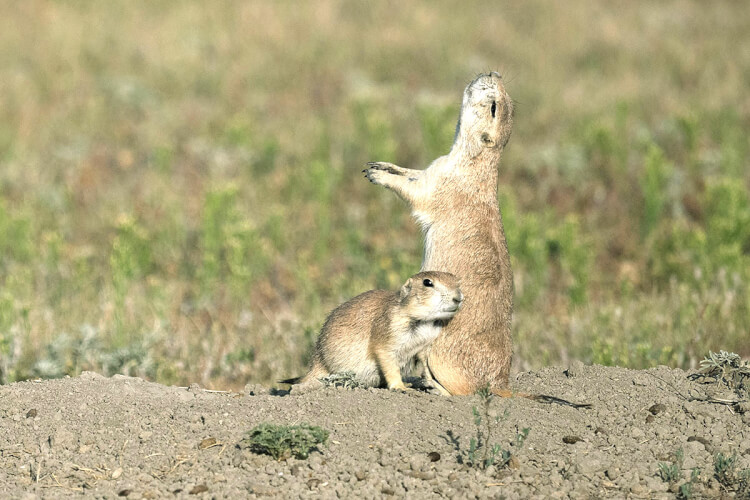
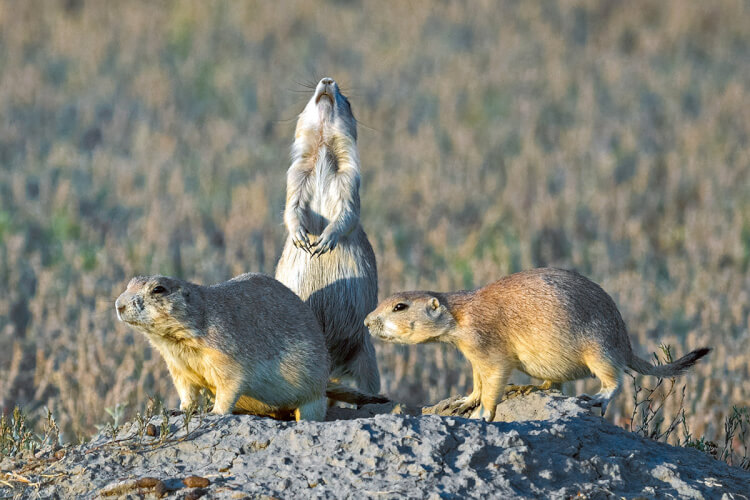
A longer lens (such as 400mm or more) certainly helps to get close-up shots, but since they are so close to the road you can get away with shorter lenses as well. Since most colonies are on both sides of the road you can decide which side is best according to light conditions.
Watch for Predators
While you’re watching the prairie dogs, scan the horizon for predators. Coyotes or foxes could be on the prowl. Hawks might be circling overhead watching for a young animal that might have strayed too far from the protection of a burrow.
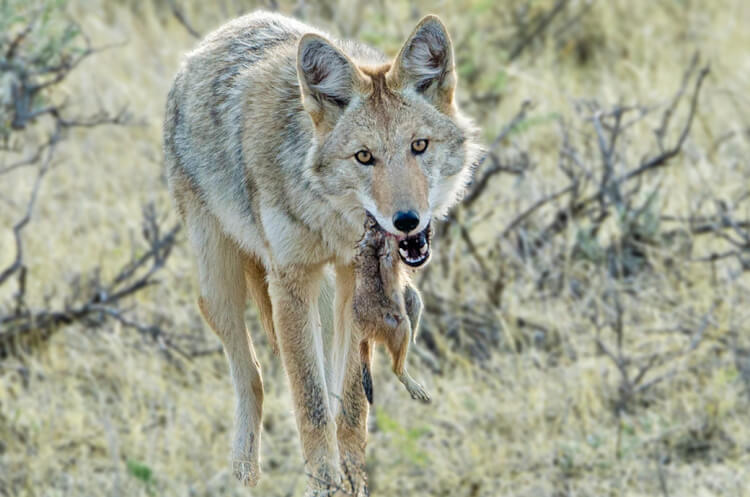
We once spotted a coyote right near the road that was hunting for its afternoon lunch. Determined to make a kill, the coyote grabbed a prairie dog from its burrow and carried it away soon after we stopped. Another time we could hear a lot of barking and yipping in one part of a colony. A close look revealed a Swainson’s hawk that was finishing its meal right in the midst of the burrows.
Binoculars help to give you a wider picture of black-tailed prairie dog behaviour. With binoculars, you can also scan the colony looking for burrowing owls that might be standing near their nest in an abandoned burrow.
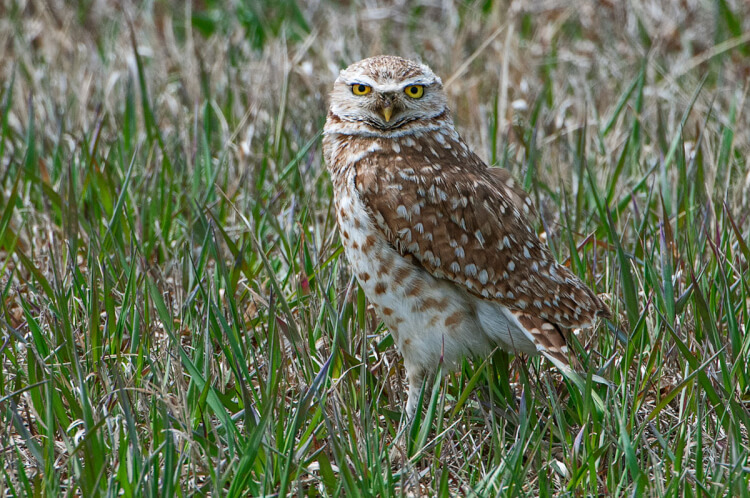
More Information
Parks Canada Grasslands National Park website has information on activities and experiences in the park, maps, camping, and more.
Ecotour Scenic Drive is approximately 20 km. If you are starting and returning to Val Marie, the distance is about 80 km.
Be aware that prairie rattlesnakes are found in the park.
You might also enjoy these posts on Photojourneys:
SUBSCRIBE to Photojourneys below
Feel free to PIN this article for later on Prairie Dogs in Grasslands National Park


